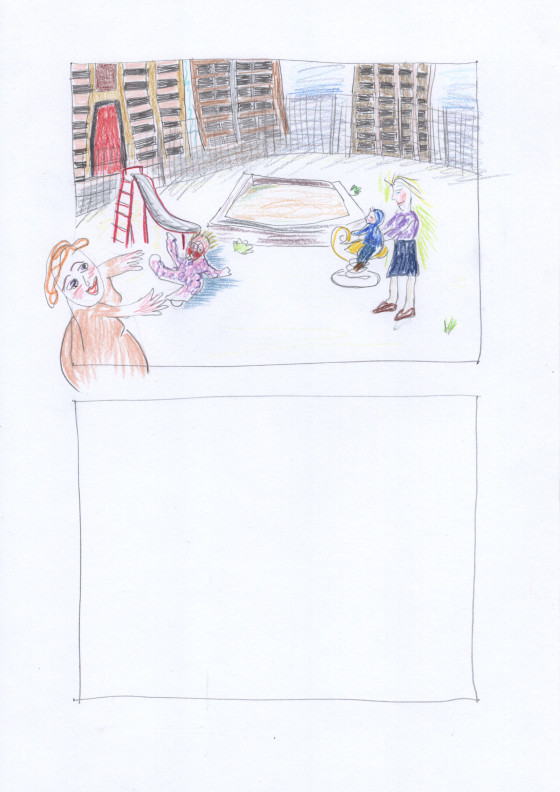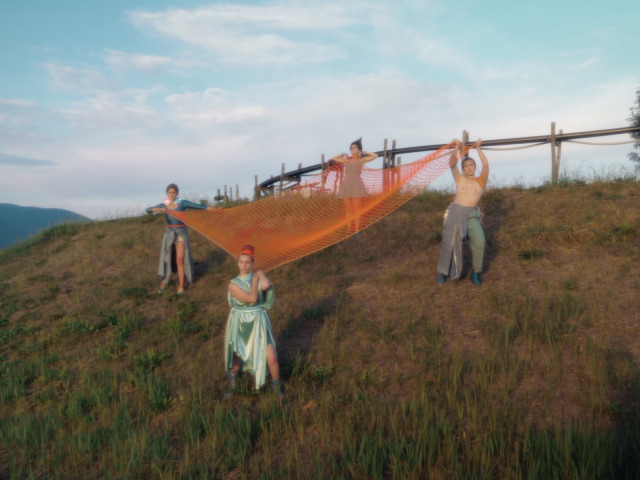Revolutionary Women: Ella
Germany/Italy, 2022
Three-channel video installation, color, stereo, 27 min.
180 drawings, A4 and A3.
Kunstverein Braunschweig, installation view, 2022.
Photography: Stefan StarkGetting familiar with the unexplored life stories of a woman who was born in the second year of World War II, the video installation Revolutionary Women: Ella raises questions about the legacy of the following generations. The ambiguities of ‘Ella’s’ stories (her birth name was Ala) reveal the complexity of the following generations’ connection to and disconnect from a woman who at first sight is not a hero, but at second sight in fact is. In a multi-layered zone between identification, imagination and atmosphere, five women get closer to her story to retell it.
‘Ella’s’ life is deeply linked to the history of the twentieth century: She is the child of Lithuanian forced laborers of German origin who were compelled to work for the ‘Home to the Reich’ Nazi program until 1945. In 1959, aged 19, she returns to Germany after an odyssey through many refugee camps, where she in the 1970s and ’80s, an era typified by the economic miracle, continues to live in isolation as a housewife and mother in the West German Rhineland. I understand ‘Ella’s’ experiences of war, fleeing, and migration, followed by strongly gendered life conditions as a mother and housewife, as significant and as an example for the life of women – and migrant women – in post-war West Germany. Given the dominant female roles of her time, due to the boundaries of class society as well as the structural exclusion of migrants, her experiences have not been discussed in public.
Reading ‘Ella’s’ stories from a transgenerational perspective and confronting her stories and experiences with the next two generations implies modes of transcriptions, translations, and transformations – especially through the tactical and material medium of drawing and performative reenactment. From this evolves the fabulation of and with the four fictitious granddaughters: The four women in their 20s and early 30s are staged as atmospheric or surreal figures within ‘Ella’s’ stories. In conversation and rehearsal with the performers Erica Cosi, Monica Hirano, Adelaide Mancuso, and Lucrezia Palandri, I developed images and scenes relating to ‘Ella’s’ stories. I was interested in atmospheres, in non-linguistic memories which are not embedded into a linear narrative – in memories which might be kept in the body or in specific images. Within their interactions with the past, they suggest future scenarios. In that sense, the expressions, gestures and actions of the fictitious daughters and granddaughters have been created in the presence of ‘Ella’s’ unacknowledged, difficult, and traumatic memories. I believe that the transformative potential of lived experiences and inherited atmospheres can be activated through this dialogical, imaginative and tactile way of retelling these (her)stories.

Transgenerational Memories at the Margins of History. Ulrike Gerhardt in conversation with Lene Markusen and Marta Popivoda. Listen.UP – The New Knowledge and Technology Transfer Podcast at the University of Potsdam (January 2023). 30 min., in German language.
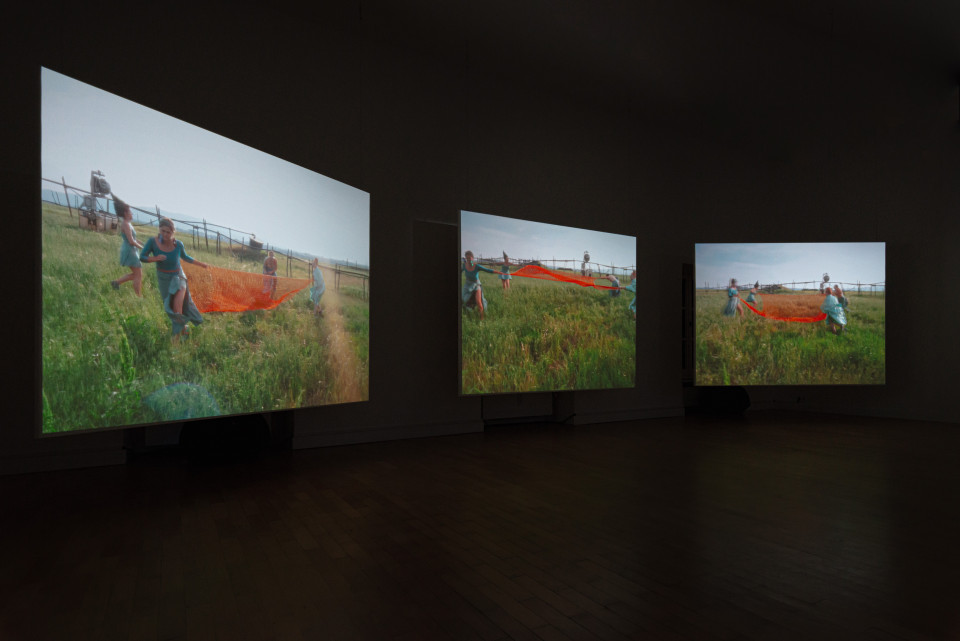
Kunstverein Braunschweig, installation view, 2022.
Photography: Stefan Stark
This work is in featured in the artist's book Mythbiographies











ELLA. (Crying, in Lithuanian) Mom! I am not feeling well. Mom, come! Mom, where are you?
This wailing voice drags Ella’s daughter Archiva out of her cottage and she walks in the direction of the camera and pushes away the red filter.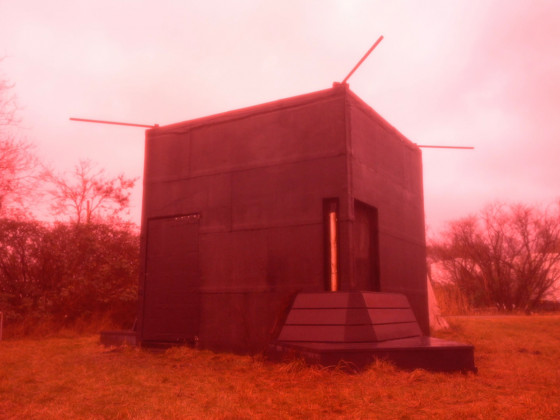








Archiva poses on top of The Lying Woman (1956) by German female sculptor Barbara Haeger. Sculptures of female figures, made in the 1950s and 60s by artists Barbara Haeger, Gisela Engelin-Hommes, Maria Pirwitz and Ursula Querner, can still be found in Hamburg’s public space today. They can be understood as stony archetypes of women’s roles at that time. The meta-figure Archiva ‘kidnaps’ these sculptures by throwing a net over them.






Villa Romana, Florence, installation view, 2021.
Photography: Ela Bialkowska, OKNOstudio




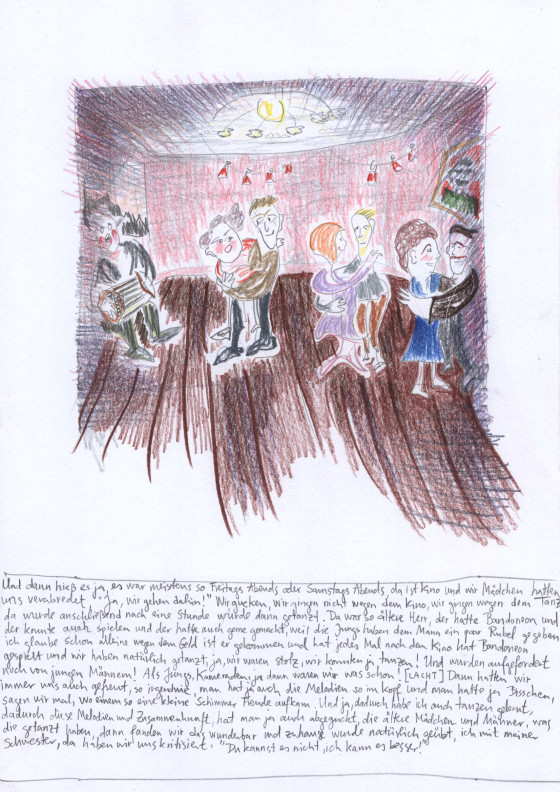

While Ella tells about her first months in refugee camps in West Germany 1959/60, granddaughter Lucrezia tries to find her balance and slowly gets in motion, removing the inherited fixed gesture.







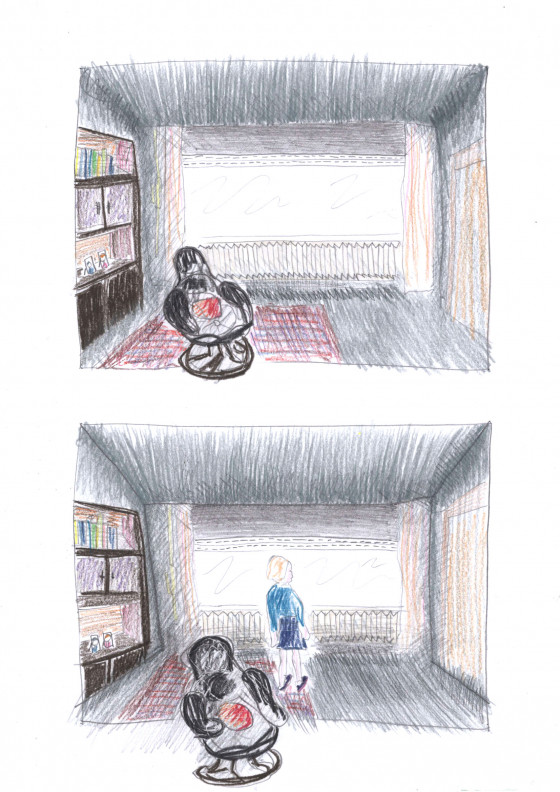

Archiva jogs in the forest, then suddenly takes over Ella’s emotions, and gets a laughing cramp while Ella talks about the boredom and monotony of those years of domestic isolation as a mother and housewife.


Ella herself turned into a sculpture, placed on top of Konrad Adenauer and Willy Brandt – the chancellors of the epoch in Ella’s early adult life in Germany, where she migrated and later, for 20 years, lived as a housewife.



The granddaughters have cramps and tics that refer to Ella’s experiences and troubles and to the female sculptures’ expressions. By creating kinships with plants and animals, they find new ways of existence: they intimately dance with an agave, or breastfeed a piglet.


Archiva envisions the four granddaughters while they are acting enthusiastically and in solidarity. They are performing rituals to abolish the nuclear and patriarchal family and celebrate the future rise of female solidarity at a 1970s waste disposal site. They transform a tablecloth into an elastic membrane.


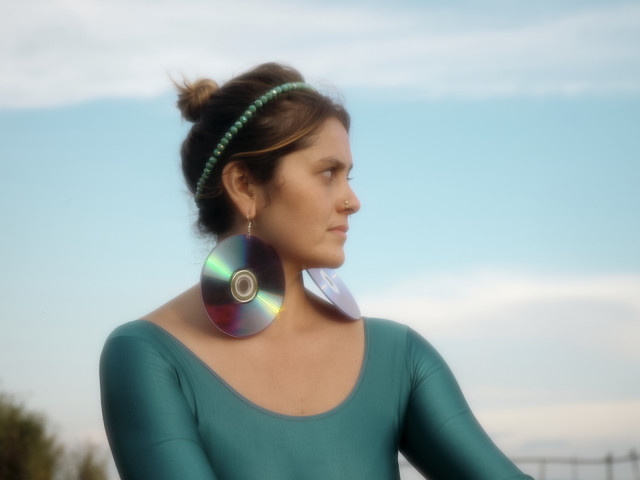




Villa Romana, Florence, installation view, 2021.
Photography: Ela Bialkowska, OKNOstudio
Villa Romana, Florence, installation view, 2021.
Photography: Ela Bialkowska, OKNOstudio



